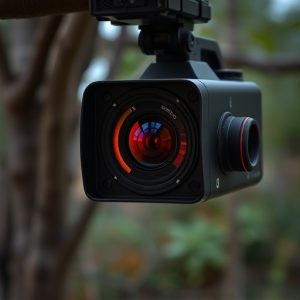Detecting Spy Cameras with RF Detectors: A Comprehensive Guide
RF detectors are powerful tools for identifying hidden spy cameras with remote viewing capabilities,…….
RF detectors are powerful tools for identifying hidden spy cameras with remote viewing capabilities, which transmit data using radio signals. Preparation includes calibrating the detector, mapping hiding spots, and disabling interfering devices. Professionals use infrared cameras and RF detection to pinpoint cameras accurately while minimizing false alarms. Post-sweep analysis involves reviewing results, updating databases, and maintaining equipment to stay ahead of new threats.
Uncover the secrets hidden within your surroundings with our comprehensive guide on RF detector sweep hidden camera tutorials. Learn how these advanced tools, like spy camera detectors, play a pivotal role in safeguarding privacy by identifying covert surveillance devices. From understanding RF technology to mastering remote viewing techniques, this step-by-step tutorial equips you to conduct thorough sweeps. Discover essential tools, preparation tips, and post-sweep analysis for effective protection against hidden cameras with remote viewing capabilities.
- Understanding RF Detectors and Their Role in Detecting Hidden Cameras
- Preparing for Your Spy Camera Detector Sweep: Essential Tools and Steps
- The Process of Locating and Disabling a Spy Camera Using Remote Viewing
- Post-Sweep Analysis and Maintenance: Ensuring Future Protection Against Hidden Cameras
Understanding RF Detectors and Their Role in Detecting Hidden Cameras
RF (Radio Frequency) detectors are specialized tools designed to uncover hidden surveillance devices, such as spy cameras with remote viewing capabilities. These devices operate by scanning and analyzing radio signals in a given frequency range. Hidden cameras often transmit video and audio data using wireless technology, leaving an RF signature that can be detected by these advanced sensors.
By emulating the signal of common household electronics, spy cameras attempt to stay undetected. However, RF detectors are adept at identifying unusual or anomalous radio signals, raising suspicions where none existed before. This technology is particularly useful in high-security areas, where unauthorized devices like hidden cameras could pose significant risks.
Preparing for Your Spy Camera Detector Sweep: Essential Tools and Steps
Preparing for your RF detector sweep is a crucial step in effectively locating hidden spy cameras equipped with remote viewing capabilities. First, gather essential tools such as a radio frequency (RF) detector, a notepad, and a pen. These tools will help you identify and track signals emitted by the camera’s remote control. Before starting, ensure your detector is properly calibrated and tested to avoid false positives or negatives.
Next, familiarize yourself with the environment where you’ll conduct the sweep. Map out potential hiding spots for spy cameras, considering common locations like corners, behind furniture, or within easy reach from a window. It’s also important to disable or put on silent mode any electronic devices that might interfere with your RF detector’s signal, such as mobile phones or wireless routers. This step ensures accurate readings and helps you pinpoint the exact location of hidden spy cameras with remote viewing capabilities.
The Process of Locating and Disabling a Spy Camera Using Remote Viewing
Locating and disabling a spy camera using remote viewing involves a meticulous process designed to identify and neutralise hidden surveillance devices. The initial step is to employ advanced remote sensing techniques, such as infrared cameras and thermal imaging, to scan areas where a Spy Camera With Remote Viewing might be concealed. These tools can detect subtle heat signatures or anomalies that indicate the presence of electronic equipment, aiding in pinpointing the camera’s exact location without physical interaction.
Once potential hidden cameras are identified, further analysis is conducted using radio frequency (RF) detectors. These devices can pick up on the unique RF signals emitted by spy cameras, allowing for precise targeting and detection. By sweeping through various frequencies, the operator can isolate the specific signal of the target camera, confirming its presence and enabling a strategic approach to disablement. This method ensures a thorough search while minimising false positives, making it a crucial technique in the arsenal of professionals tasked with countering covert surveillance.
Post-Sweep Analysis and Maintenance: Ensuring Future Protection Against Hidden Cameras
After successfully detecting and locating hidden cameras, post-sweep analysis is crucial for maintaining comprehensive security against surveillance devices like spy cameras with remote viewing capabilities. It involves a thorough review of the sweep results, identifying any potential false positives or negatives, and updating the database of known camera types and locations. This process helps refine detection algorithms and improves future sweeps’ accuracy.
Regular maintenance includes checking and calibrating equipment, replacing worn-out components, and upgrading software to address new threats. It’s essential to keep records of all findings and actions taken during each sweep for future reference. By implementing these practices, individuals or organizations can stay one step ahead in the continuous battle against sophisticated hidden cameras, ensuring ongoing privacy and security.
RF detectors are powerful tools for identifying hidden cameras equipped with spy technology. By understanding how these devices work, preparing thoroughly, and mastering the sweep process, individuals can protect their privacy effectively. The ability to locate and disable a spy camera using remote viewing is a valuable skill in today’s digital age, where covert surveillance is a growing concern. Regular post-sweep analysis ensures that you remain vigilant against potential future threats, keeping your personal and private spaces safe from hidden cameras with remote viewing capabilities.

